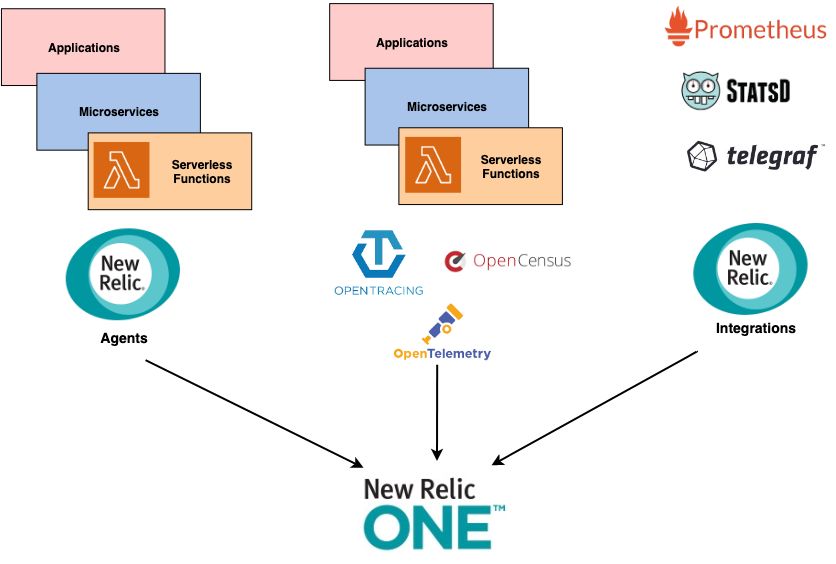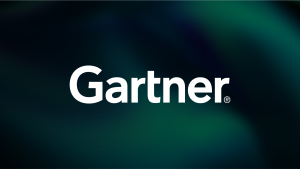Thanks to the maturation of DevOps culture, the ubiquity of cloud services, and the momentum of microservices-based architectures, it’s safe to say that modern software teams now monitor their applications and infrastructure differently from how they did a few years ago. Instead of simply choosing an APM solution based on feature evaluation, modern DevOps and site reliability teams need a single solution that can provide a full understanding of their entire software system, regardless of where the telemetry data originated.
This is observability—essentially the gathering, visualization, and analysis of metrics, traces, and logs in one place in order to gain full insight into a system’s operation. And it requires organizations to consistently and dependably instrument their applications and services along with the open source and third-party software they use. With auto-instrumentation and frictionless agent integration, monitoring tools like New Relic APM 360 can help teams make significant progress towards this goal. However, to achieve full observability for every permutation of what development teams might build into their systems, even more is needed!
Enter OpenTelemetry, a potential game changer for the software industry. OpenTelemetry, a project managed by the Cloud Native Computing Foundation (CNCF), is the result of a merger between the OpenTracing and OpenCensus projects as a promise to deliver a single open standard “of system components and language-specific telemetry libraries” to standardize how the industry uses metrics, traces, and logs to enable observability. In their own words, it will be “a complete telemetry system…compatible with most major OSS and commercial backends.”
The OpenTelemetry project makes two critical promises:
- Developers will be able to instrument their code using a single open standard.
- As OpenTelemetry gains adoption, more frameworks will include out-of-the-box instrumentation.
It’s an exciting undertaking, and New Relic customers stand to benefit in multiple ways.
New Relic’s mission to pursue a more perfect internet drives us to help software teams find meaning in their data. That’s why we built New Relic One, the industry’s first entity-centric observability platform. Complementary to the investment in New Relic One, is enabling customers to gather telemetry data from any source imaginable, including OpenTelemetry. OpenTelemetry, in combination with our New Relic agents, will equip our customers with the tools they need to collect an unprecedented bounty of telemetry data, all of which we can help correlate and synthesize for analysis, enabling teams to achieve observability throughout their systems.
Let’s take a closer look at some of the high-level plans we have for extending the promise of full observability to New Relic customers.
New Relic’s contribution to OpenTelemetry and open standards
The adoption and success of OpenTelemetry is important to our future. New Relic is committed to directly contributing to OpenTelemetry’s roadmap as they merge the OpenTracing and OpenCensus projects into one OpenTelemetry repository. More specifically, we’re dedicating resources to assist in the development of the Java, Ruby, and Python implementations of OpenTelemetry.
New Relic’s telemetry APIs and SDKs
The fundamental layer to ingest all telemetry data for New Relic starts with a new set of telemetry APIs. Along with these APIs, we’re working on a set of open-source telemetry SDKs that will allow developers and framework authors to build integrations, plug-ins, and exporters for all the languages that New Relic supports, including Java, Go, Python, Node.js, Ruby, PHP, and C/C++.
New Relic integrations for frameworks and OSS tools
In addition to the telemetry APIs and SDK, we’re building integrations for popular open source metrics-collection tools, such as Prometheus and Telegraf, and updating existing integrations such as the one we’ve built for StatsD. We’re are also building integrations with popular metrics frameworks such as Codahale/Dropwizard Metrics and Micrometer. No matter which tools teams use, they can employ these integrations to better connect the data from every source, and thus enable New Relic to serve as the one source of truth for observability of their systems.
New Relic's OpenTelemetry support
Additionally, we will write and support OpenTelemetry exporters and any additional tooling required as OpenTelemetry becomes available for a given programming language. This includes support for existing OpenTracing and OpenCensus instrumentation. We intend to build the platform features so that any developer instrumenting with OpenTelemetry or using OpenTelemetry integrated frameworks can enjoy a first-class, entity-centric experience.
Essentially, full observability with New Relic will look something like this:
We believe the future of observability holds huge promise for New Relic customers. Our goal is to make New Relic an essential part of the observability landscape, vastly accelerating our mission. We’re completely on board with OpenTelemetry and other game-changing developments in the world of observability—and we hope you are too!
This post contains “forward-looking” statements, as that term is defined under the federal securities laws, including but not limited to statements regarding market trends and opportunities in observability and OpenTelemetry, the timing, benefits and availability of related product features, New Relic’s plans and goals to extend observability to its customers, and the extent of the benefits from and New Relic’s investments in the observability landscape. The achievement or success of the matters covered by such forward-looking statements are based on New Relic’s current assumptions, expectations, and beliefs and are subject to substantial risks, uncertainties, assumptions, and changes in circumstances that may cause New Relic’s actual results, performance, or achievements to differ materially from those expressed or implied in any forward-looking statement. Further information on factors that could affect New Relic’s financial and other results and the forward-looking statements in this post is included in the filings New Relic makes with the SEC from time to time, including in New Relic’s most recent Form 10-K, particularly under the captions “Risk Factors” and “Management’s Discussion and Analysis of Financial Condition and Results of Operations.” Copies of these documents may be obtained by visiting New Relic’s Investor Relations website at http://ir.newrelic.com or the SEC’s website at www.sec.gov. New Relic assumes no obligation and does not intend to update these forward-looking statements, except as required by law.
As opiniões expressas neste blog são de responsabilidade do autor e não refletem necessariamente as opiniões da New Relic. Todas as soluções oferecidas pelo autor são específicas do ambiente e não fazem parte das soluções comerciais ou do suporte oferecido pela New Relic. Junte-se a nós exclusivamente no Explorers Hub ( discuss.newrelic.com ) para perguntas e suporte relacionados a esta postagem do blog. Este blog pode conter links para conteúdo de sites de terceiros. Ao fornecer esses links, a New Relic não adota, garante, aprova ou endossa as informações, visualizações ou produtos disponíveis em tais sites.




